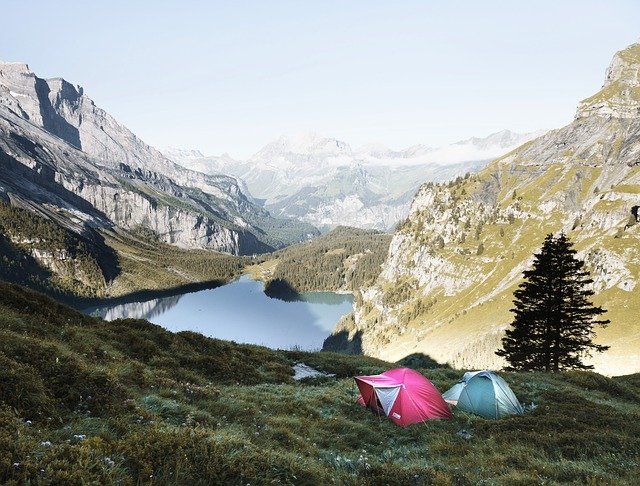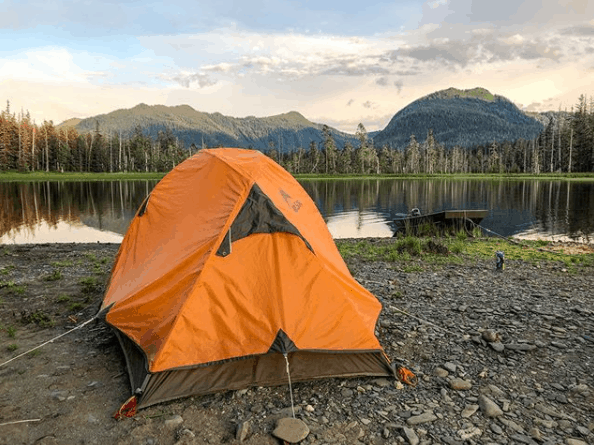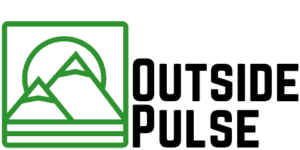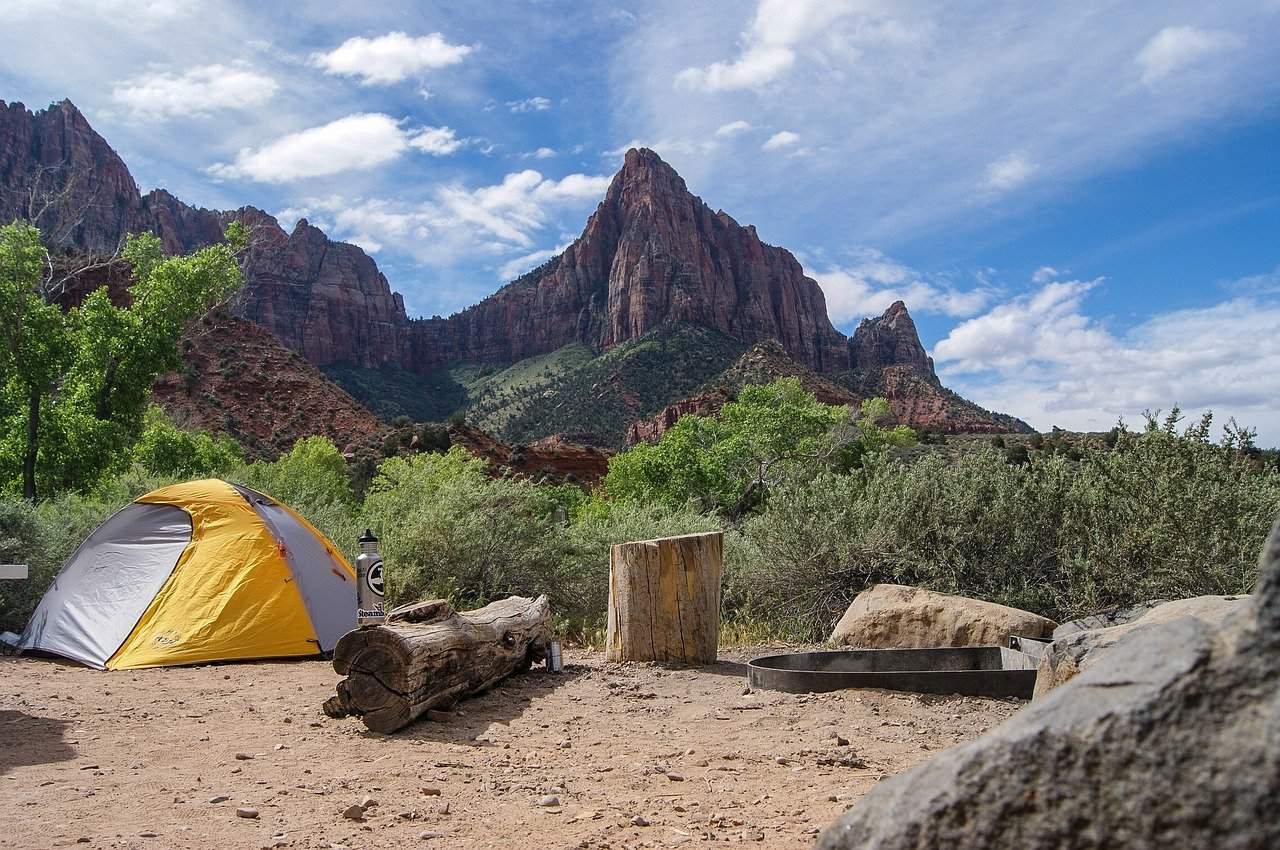For the average camper, campground camping is the only type of camping they have ever known.
But if you can learn how to camp without a campground, a whole new and exciting type of camping can open up to you.
Camping without a campground or what is more commonly referred to as dispersed camping or primitive camping is a form of camping where you camp on public land as opposed to a designated campsite in a campground. When dispersed camping you must be fully self-reliant, as common amenities such as running water, electricity, toilets, and firewood commonly found at campgrounds usually do not exist when camping without one.
There’s more to know about camping without a campground though than just being prepared and self-reliant, as you will see in the rest of this article when we dive into all the most common questions around camping without a campground.
How to Camp Without a Campground?
While many campers might believe it’s extremely difficult to camp without a campground, in actuality with a few extra preparations, camping without a campground can be quite easy and simple.
The Number One Rule for Dispersed Camping
The number one rule for dispersed camping as championed by the Boy Scouts since 1910 is “be prepared”. But what exactly does be prepared look like when camping without a campground?
The best way to describe or encapsulate being prepared when camping without a campground is to be fully self-reliant. Meaning that anything you might need while camping including fresh drinking water, food, power, firewood, etc… you need to bring with you.
How to Camp Without Running Water
One of the hardest things for many campers used to camping in campgrounds is learning how to camp without access to fresh drinking water that most campgrounds either provide directly at the campsite or at shared sources throughout the campground.
And while this can be a little difficult to get used to, a few helpful tips can go a long way when transitioning from campground camping to dispersed camping.
Tips for Camping Without Running Water
- Bring at leas two gallons of water per person per day while camping, with one gallon for drinking and the other gallon, for all other needs such as washing hands, food prep, washing dishes, and other miscellaneous tasks around the campsite
- Keep the meals simple when dry camping or camping without water to help minimize the amount of water needed for meal prep or cleanup opting for foods such as bread and rice as opposed to messy sauces or soup that require a lot of water to make as well as clean up.
- Plan activities that require a lot of exertion such as hiking or physical activities for the cooler morning hours so you sweat less and require less drinking water.
- Use hand sanitizers while camping instead of always washing your hands with water to reduce water consumption.
- If the area you’re camping has a water source use this for an extra supply of water, however, if you plan on drinking the water make sure you filter the water first with a quality camping water filter such as the Lifestraw Personal Waterfilter (which you can see on Amazon by clicking here.)
How Can I Camp Without Electricity?
For most campers electricity and unlimited power have become so ingrained into their life it’s hard to imagine trying to camp even for a brief period without electricity.
But there are a few things you can do when camping without a campground to help reduce the need for electricity as well as keep some power at the campsite.
The most important way to camp without electricity is to simply reduce or eliminate the amount of electricity you need while camping. And one of the best ways to do this is to remember why we love camping so much in the first place which is it allows us to unplug and disconnect from the modern and rushed world we live in.
So when you go camping focus on bringing and using fewer devices and appliances that require electricity in the first place, that way you won’t need as much power while you’re camping.
For myself, though including most campers I would imagine, it’s unrealistic to try and eliminate all of our modern electronic devices while camping. And for these devices, this is where a portable charger or power bank comes into play as they can provide a great source of power for all your small electronic devices while camping.
There are literally hundreds of different types of portable chargers and power banks on the market today. So the best thing to do is to think about all the devices you plan on using while camping and then pick a charger or power source large enough to accommodate all your needs.
Going to the Bathroom Without a Campground Toilet
Once people have moved past the lack of running water and electricity, all most inevitable their thoughts turn to how to go to the bathroom without a campground toilet?
And while this might not be the most glamourous or fun topic to discuss, if you plan to camp without a campground it’s important to know how to go to the bathroom.
There are two main ways to go to the bathroom when camping without a campground including portable camping toilets and digging a cat hole.
There are many different types of portable camping toilets on the market today including everything from simple toilets that are nothing more than a toilet seat over a 5-gallon bucket lined with a bag, all the way up to cassette toilets that operate much like your toilet at home that have a holding tank at the bottom.
However, if you choose to go this route it’s important that you properly dispose of your waste.
The other way is to dig a cat hole, which entails digging a hole that is at least 200 feet away from all water sources and four to six inches wide and six to eight inches deep to use as a toilet.
How Do I Charge My Phone While Camping?
As mentioned above the best way to charge your phone while camping is to use a portable charger, which are portable battery banks that can be charged up at home or in the car before you go camping. And once at the campsite typically provide multiple charges to your phone through a USB connector.
How many times the portable charger will fully charge your phone depends on the size of the portable charge you buy.
(One of my favorite portable chargers on Amazon is the Anker PowerCore 10000 Portable Charger which you can check out on Amazon by clicking here.)
Can You Just Camp Anywhere?

While there are many places you can camp and even camp for free you cannot just camp anywhere as a general rule. For example, you cannot camp on private land without special permission from the owner. However, there are numerous places you can camp beyond your basic campgrounds such as National Parks, State Parks, and even places you can camp for free such as BLM land as well as National Forests.
National Parks
The National Park Services manages 421 National Parks in the US spread out over 84 million acres, providing an almost unlimited amount of places to camp. Included not only designated campgrounds and campsite but also backcountry camping spots as well that allow you to camp without a campground.
Keep in mind though that there are rules and regulations if you plan to camp in the backcountry of National Parks and some areas of the park might be off-limits to camping due to nature or wildlife concerns. Also, if you plan to camp in the backcountry inside most National Parks it usually requires a backcountry permit before heading out.
State and Local Parks
State and local parks can also be a great place to set up a tent but keep in mind that State and local parks will often require you to camp inside a campground and as a general rule do not allow for as much dispersed camping as National Parks do.
Also, rules and regulations around camping in State and local parks vary from State to State so before camping in State or local parks and choosing a campsite it’s best to check on the rules and regulations of that particular park.
BLM Land and National Forests
If you want to try camping without a campground, some of the best places to do this are either BLM land or National Forests as both of these government-owned lands allow for backcountry or dispersed camping. And perhaps the best part about these public lands is they allow you to camp on them for free.
However, just because you can disperse camp on this public land for free does not mean there aren’t any rules or regulations that you need to follow while dispersed camping.
Rules for Camping on Public Lands
- While dispersed camping is free on public land there may be designated campsites and campgrounds on the land that is not free to camp at.
- Most of the land is open and available to dispersed camping unless marked otherwise.
- You can only camp for a maximum of 14 days in a row within a consecutive 28 or 30 day period depending on the type of land.
- When picking a place to camp, try to choose an area that has already been camped on when possible instead of creating a new spot.
- While campfires are generally allowed when dispersed camping, this is not always the case, so always check to see if there are any fire bans in the area you plan to camp before starting a campfire.
- Only use dead and down trees and branches for firewood and never cut down live trees for firewood.
- Follow the leave no trace principle and if you bring something in with you, make sure to take it out with you when you leave.
- Do not camp within one mile of designated campgrounds or a developed recreation site.
Is it Safe to Camp on BLM Land?
A common question from campers that have never camped on BLM land or public land before is whether or not it’s safe.
The best answer to this question is yes, as a rule, camping on BLM land is safe, however, just like everywhere else, there is no guarantee of safety as bad things can happen no matter where you choose to camp.
So if you are going to camp on BLM land or anywhere else for that matter, it’s always important to keep your guard up, be aware of your surroundings, and have a plan in case something were to go wrong.
Also, it’s important to remember that when camping without a campground or dispersed camping on public lands, danger can take many forms other than just danger from people or other campers including wildlife, extreme weather, dangerous terrain, and emergency situations.
How to Find Free Dispersed Camping

There are many great resources to help find free camping spots on BLM land, National Forests, Wildlife Management Areas, state forests, and grasslands.
Below are some of the most popular ways to find free camping across the US.
BLM Land Website – BLM land encompasses more than 247 million acres of land all across the country that offers some amazing places to pitch your tent. And the best place to find all these amazing free campsites is to go to the visit us page on the BLM land website where you can search by state when choosing which National Forest to visit.
US Forest Service Website – The US Forest Service manages the National Forests throughout the country and provide more places to camp than you could ever hope to camp in a lifetime. And the best way to find these free campsites is to visit the US Forest Service website and Use the Find a Forest or Grass Land feature on the right side of the page.
FreeCampsites.net – This website is also a really popular choice for campers when trying to find free land to camp on and includes all types of land. This website is user-driven as well so it’s a great place to find unique spots to camp at that might be a little off the beaten path or hard to find.
Campendium.com – This huge website brings together a ton of useful information about all different types of camping spots including RV Parks, National Parks, National Forests, State Parks, as well as tons of free camping options. Allowing you to search by type of camping as well as by state, so you definitely need to check the website out if you are looking for free camping.

